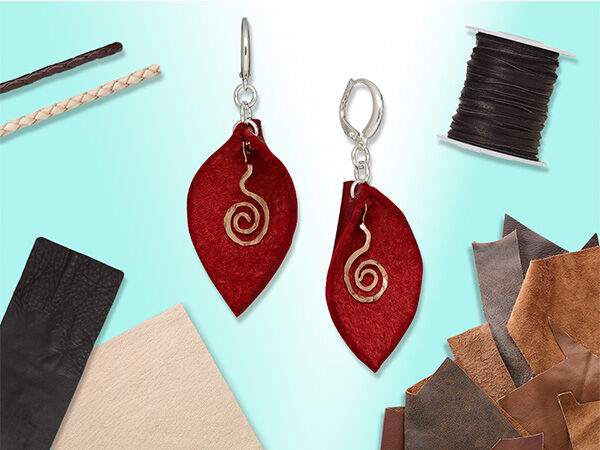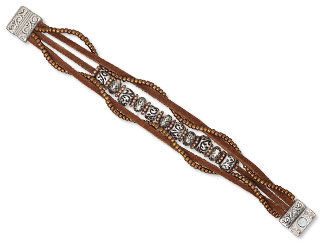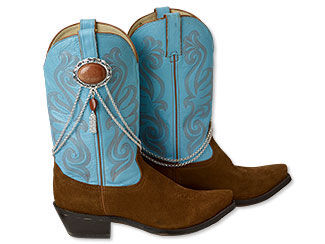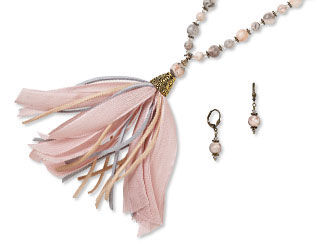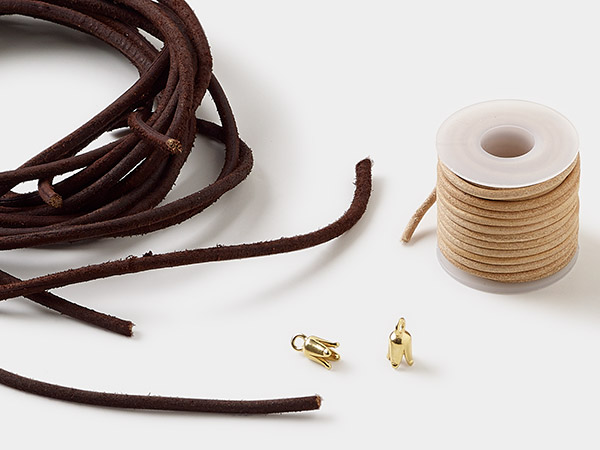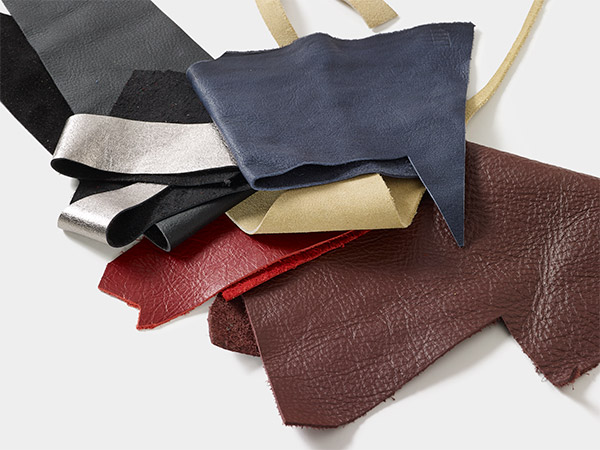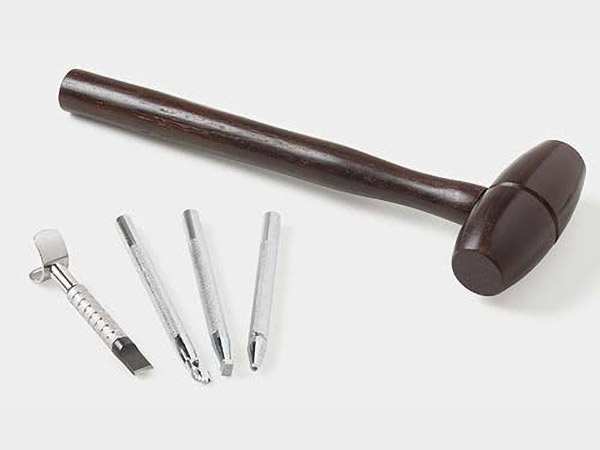Intro to Leather
by Tammy Honaman, Author, Jewelry-Making Expert and Educator,
Exclusively for Fire Mountain Gems and Beads®
Leather is back and all the rage with jewelry and fashion designers. Leather is one of the most flexible flat materials available. It is fibrous and allows water and air to pass through, making it a material that will last a long time. There are different types of leather, some of which can be molded, stretched and sculpted and others that can be carved (tooled), punched with steel tools, hole punched and joined with metal fasteners.
Tanning is a process of removing natural fats and oils from skin and replacing it with other oils and chemicals. Each tanning method produces different kinds of leather.
Rawhide is hide cured with salt to preserve and protect the skin. Rawhide is hard, difficult to cut and almost impossible to bend. Rawhide can be made pliable with soaking and then can be shaped, molded or formed. As rawhide dries, it shrinks. Once dry, it holds the shape very well, so it is great for creating art forms that are meant to be rigid. It also makes great mallets to use when working with leather.
Chrome tanned leather is what is most commonly used in clothes, shoes, handbags and upholstery. Chrome tanning is done by adding chromium sulfate and chemicals to skins. It can be thin suede, or heavy like materials used for belts.
Deer-tanned leather is deer skin cured with a chrome tanning process and then a secondary process of buckskin tanning or saddle tanning.
Oil tanned leather, known as latigo, is often used for lacing and is typically yellow or tan.
Vegetable-tanned leather is created by adding tannins, from tree bark and plant leaves, to the skins. The process causes the proteins to become less water-soluble and the skin to be more flexible. Vegetable-tanned leather can be painted, dyed, carved, stitched and more, making this a very versatile type of leather available to the artist today.
Like gemstones, the fewer flaws there are in the skin or tanned leather, the higher the quality (and cost). Leather needs to be treated well to last long. To prevent leather from drying out and becoming brittle, keep it out of direct sunlight and, when storing, wrap it in paper and keep in a cool, dry place. Finished leather should be treated twice a year to return oils to the leather. Choosing the right treatment depends on the type of leather.
Leather Can Be:
Cut - tools should be sharp. A razor or sharp craft blade is best.
Dyed - spirit dye or dyes made from a base of alcohol, penetrate deep into the fibers of leather. Oil dyes will soften the leather and will make it easier for the dye to penetrate into the fibers; the only colors are brown and black. Pigment inks and dyes will also work well to dye leather. Gilders Paste®, a beeswax-based paste, will color leather like dyes. dyeing leather will give you the same effect as adding stain to wood, color will be seen in the grain but the finish is subtle. Apply the dye using a brush or dauber then, once dry, buff with a soft cloth. Use alcohol-based dyes in a well ventilated area away from any open flame.
Molded - if forming over a form, soak the leather in warm water for a few seconds until it is soft and will stretch under pressure. If bending or shaping, moisten the grain side (not smooth) if less than 1.6mm (3/64 inch) thick; moisten both sides if thicker. It is best to have clean hands or wear gloves when you work with moist leather as any dirt or oils will transfer from your skin to the leather and be difficult to remove.
Punched - rotary and steel hole punches will place holes in the leather. You can use the holes as a decorative detail, for lacing or you can add metal trim such as brads and washers.
Stitched - you can sew layers of leather together by hand or with a sewing machine and a leather needle. A leather needle is made with a blade on the end so it will cut the leather open, allowing the rest of the needle and thread to pass through.
Stamped - metal stamps add design and texture. When stamping, place the leather being stamped onto a solid, stable surface so you don’t get a bounce, and then strike the stamp with a rawhide, plastic or rubber mallet.
Textured - cutting lines in the leather is a great way to add texture. A swivel knife is the ideal tool for this task. It cuts the leather as well as swivels as you use it, making it easy to maneuver as you cut through the grain. An awl or stylus can be used to create impressions in damp leather and add relief to leather when combined with cuts made using a swivel knife.
Shop for Your Materials Here:
Have a question regarding this project? Email Customer Service.
Copyright Permissions
All works of authorship (articles, videos, tutorials and other creative works) are from the Fire Mountain Gems and Beads® Collection, and permission to copy is granted for non-commercial educational purposes only. All other reproduction requires written permission. For more information, please email copyrightpermission@firemtn.com.
